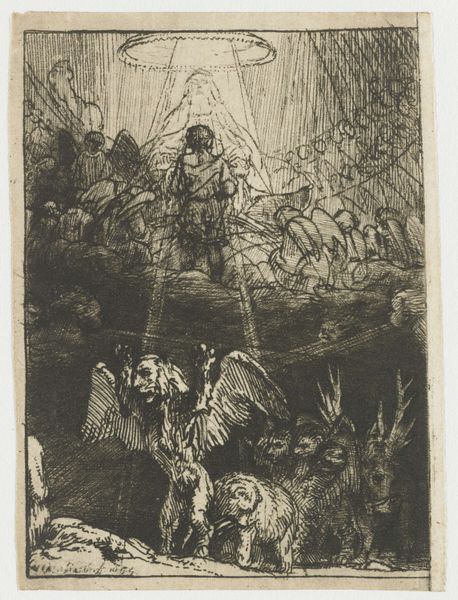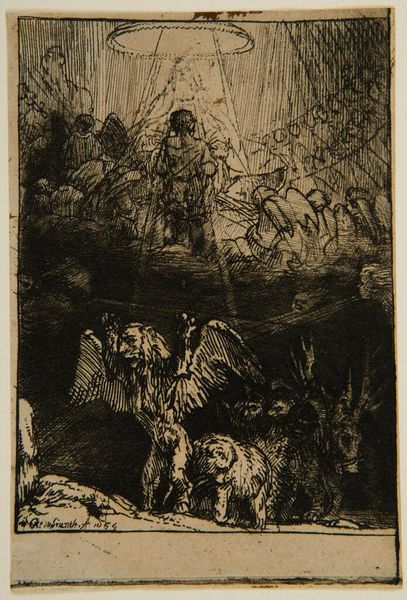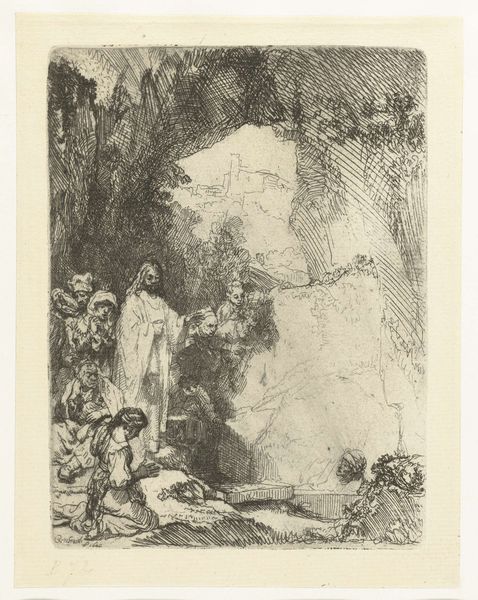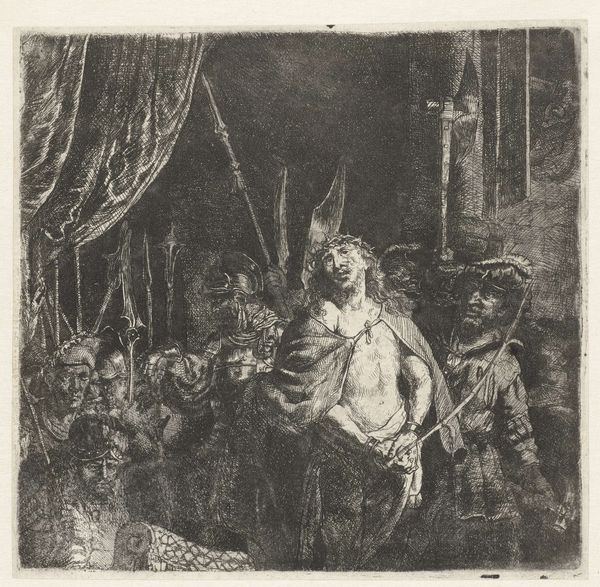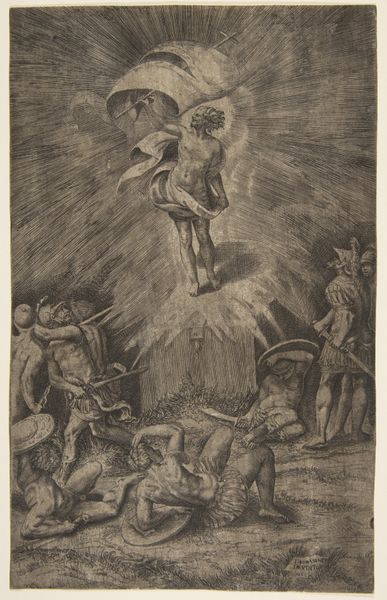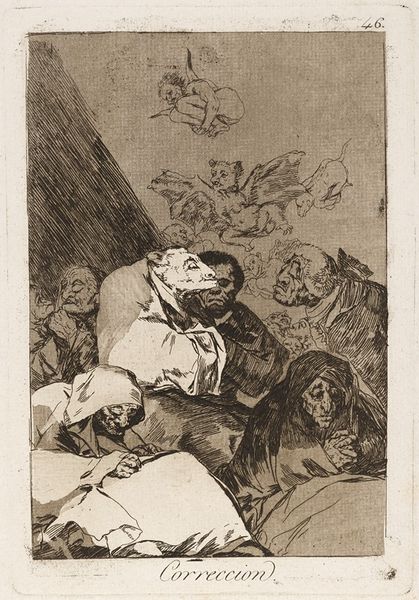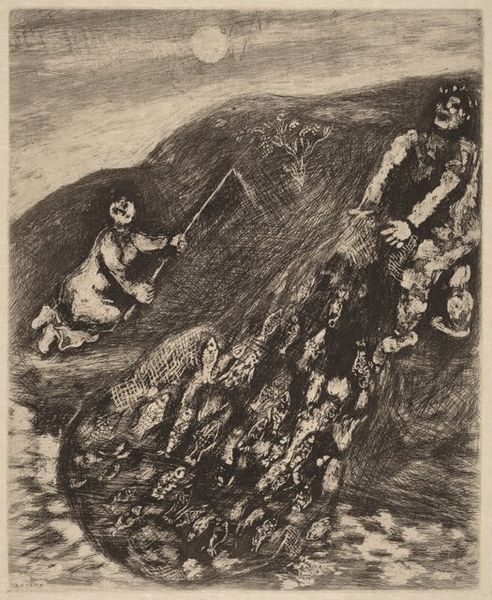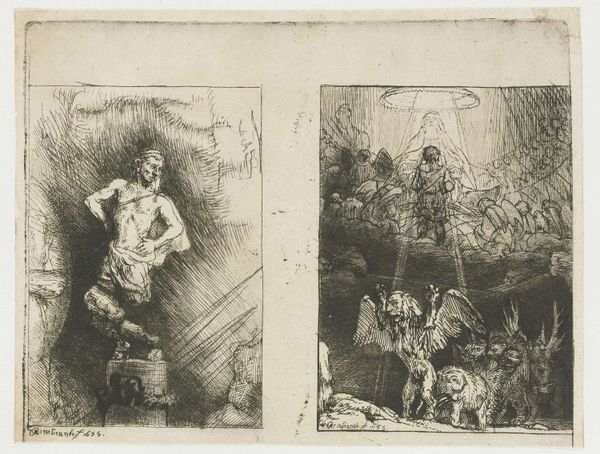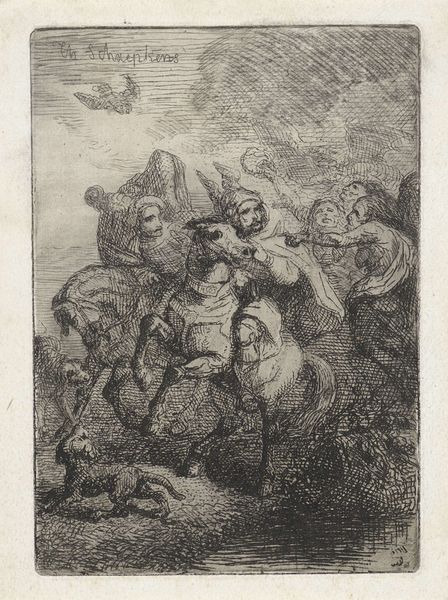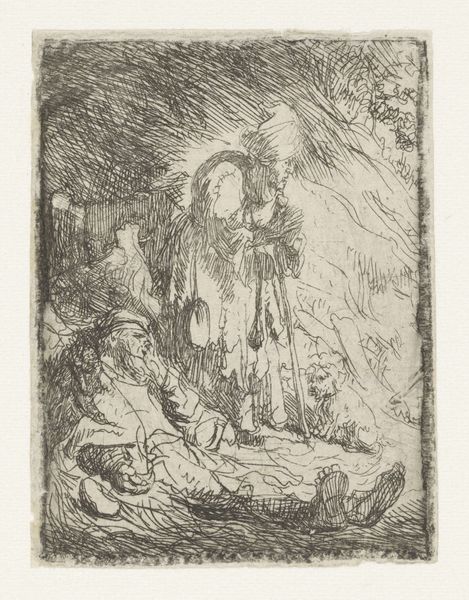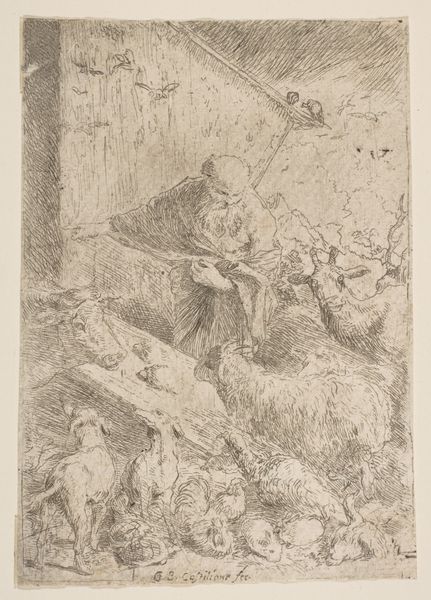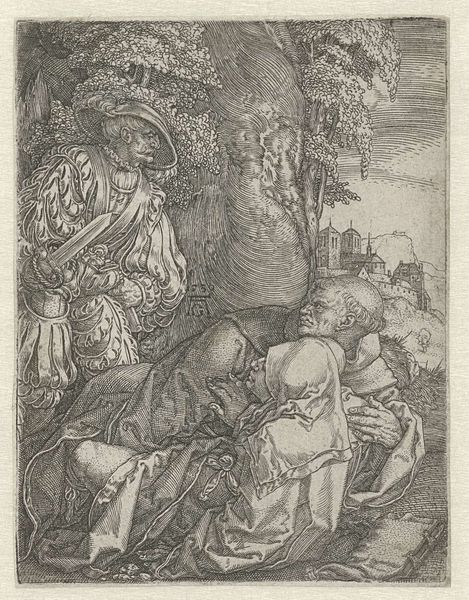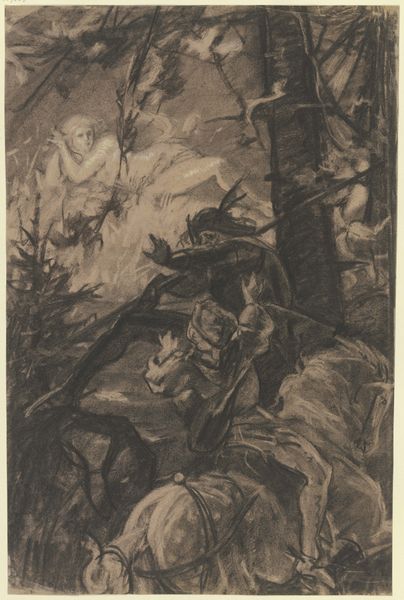
print, etching
#
narrative-art
#
baroque
#
dutch-golden-age
# print
#
etching
#
figuration
Dimensions: height 134 mm, width 82 mm
Copyright: Rijks Museum: Open Domain
Editor: This is Rembrandt van Rijn's "Daniel's Vision of the Four Beasts," made in 1655. It's an etching, so relatively small in scale. It feels quite dramatic to me, with all the different textures created by the etched lines. What strikes you about this piece? Curator: Immediately, I think of the material conditions that allowed for such a detailed print to be created and distributed. Etching, as a reproductive medium, democratized images and narratives. How do you think the process of etching influenced the subject matter depicted? Did the ability to create multiples shape how religious stories were circulated and understood during Rembrandt's time? Editor: That's a great question. I hadn’t considered the impact of reproducibility on the dissemination of these biblical stories. Maybe the accessibility made it more of a common subject matter? Curator: Precisely. Moreover, the "hand" of the artist is still quite present despite its mechanical reproduction, isn't it? Note how Rembrandt uses varied line weights and densities to suggest different textures. How do these textures impact our understanding of the different beasts and divine figures? Editor: Definitely. The line work around the beasts makes them look more tangible and rough, almost like animals one might see, compared to the ethereal beings above. Do you think Rembrandt was trying to ground a divine vision in material reality through his etching technique? Curator: A possibility to be sure, yes! Rembrandt uses the etching process to translate the immaterial into something palpable. Consider the socio-economic context: were there print shops that might have supported Rembrandt’s endeavors? How did the sale of these etchings contribute to his financial situation? What were his influences, were similar prints being produced by others, and to what audiences were these being marketed? Editor: Wow, that is something else. So much to consider! I see the print as something of much wider meaning now! Curator: Exactly. By focusing on the materials and the conditions of production, we can unlock deeper meanings within this print, far beyond simply its subject matter.
Comments
No comments
Be the first to comment and join the conversation on the ultimate creative platform.
